Introduction
In an era where efficiency and speed are paramount, decision automation is revolutionizing the way businesses operate. Leveraging advanced algorithms and machine learning, this technology enables organizations to make swift, data-driven decisions without human intervention. From enhancing supply chain management at Renault to improving operational efficiency at Amgen, decision automation is proving to be a game-changer across industries.
This article delves into the core aspects of decision automation, exploring its benefits, applications, and the strategic role it plays in driving business efficiency. By understanding and implementing decision automation, companies can not only streamline their processes but also empower their workforce to focus on innovation and growth, ensuring they stay ahead in a competitive landscape.
What is Decision Automation?
The use of advanced automated systems and algorithms enables business choices to be made without human involvement. By employing predefined rules, machine learning, and analytics, this technology can analyze extensive datasets to produce outcomes aligned with strategic objectives. AI-driven decision-making is skilled at recognizing concealed patterns and trends within extensive amounts of information, providing insights into market developments, consumer behavior, and operational effectiveness that would be challenging to detect by hand.
For example, Renault’s supply chain department has utilized a data lake to structure and analyze its processes, enabling precise control over factory supplies. This approach, combined with AI, has significantly enhanced their decision-making capabilities. According to Ludovic Doudard, General Manager Process Engineering Supply Chain at Renault, this digital foundation has allowed them to develop a control tower that connects with partners and optimizes their operations.
By streamlining decision-making processes, organizations can drastically reduce the time spent on analysis and improve response times. Data from a Canadian survey suggest that 6.1% of enterprises have incorporated AI into their production processes, highlighting a rising trend towards mechanization. Effective managerial decision-making, supported by AI, not only influences growth and partnerships but also enhances overall operational efficiency.

Key Aspects of Decision Automation
Decision mechanization is transforming enterprise procedures across different industries. Central to this transformation are rule-based logic, machine learning capabilities, and seamless integration with existing organizational systems. Rule-based reasoning, which has been essential to mechanization for decades, allows organizations to create and uphold specific rules for decision-making. According to Gartner, a Business Rules Engine (BRE) allows companies to ‘explicitly define, analyze, execute, audit and maintain a wide variety of business logic, collectively referred to as rules.’ This system ensures that actions, such as authorizing credit card transactions or processing insurance claims, are automatically executed once predefined conditions are met.
Machine learning further enhances automation of choices by enabling systems to learn from data patterns over time. This capability is crucial for identifying and defining problems more accurately. AI algorithms analyze vast datasets to reveal underlying patterns, anomalies, or emerging trends that might not be apparent to human decision-makers. This not only enhances the precision of choices but also diminishes the uncertainty and inconsistency linked to human judgment.
Integration with current organizational systems ensures that automated decisions are seamlessly incorporated into broader operational processes. This holistic approach fosters a cohesive operational environment, allowing organizations to navigate and win in today’s data-driven world. As Phil Goldstein, a veteran technology journalist, notes, ‘To navigate and win in today’s world, the modern enterprise needs a decision-centric software architecture.’ By integrating data, logic, and action into a dynamic and collaborative foundation, organizations can adapt to ever-changing conditions and achieve their operational goals.
In summary, process enhancement through rule-based logic, machine learning, and seamless integration significantly improves the decision-making process. It allows companies to make improved, quicker choices while ensuring that these choices align with their broader operational strategies.
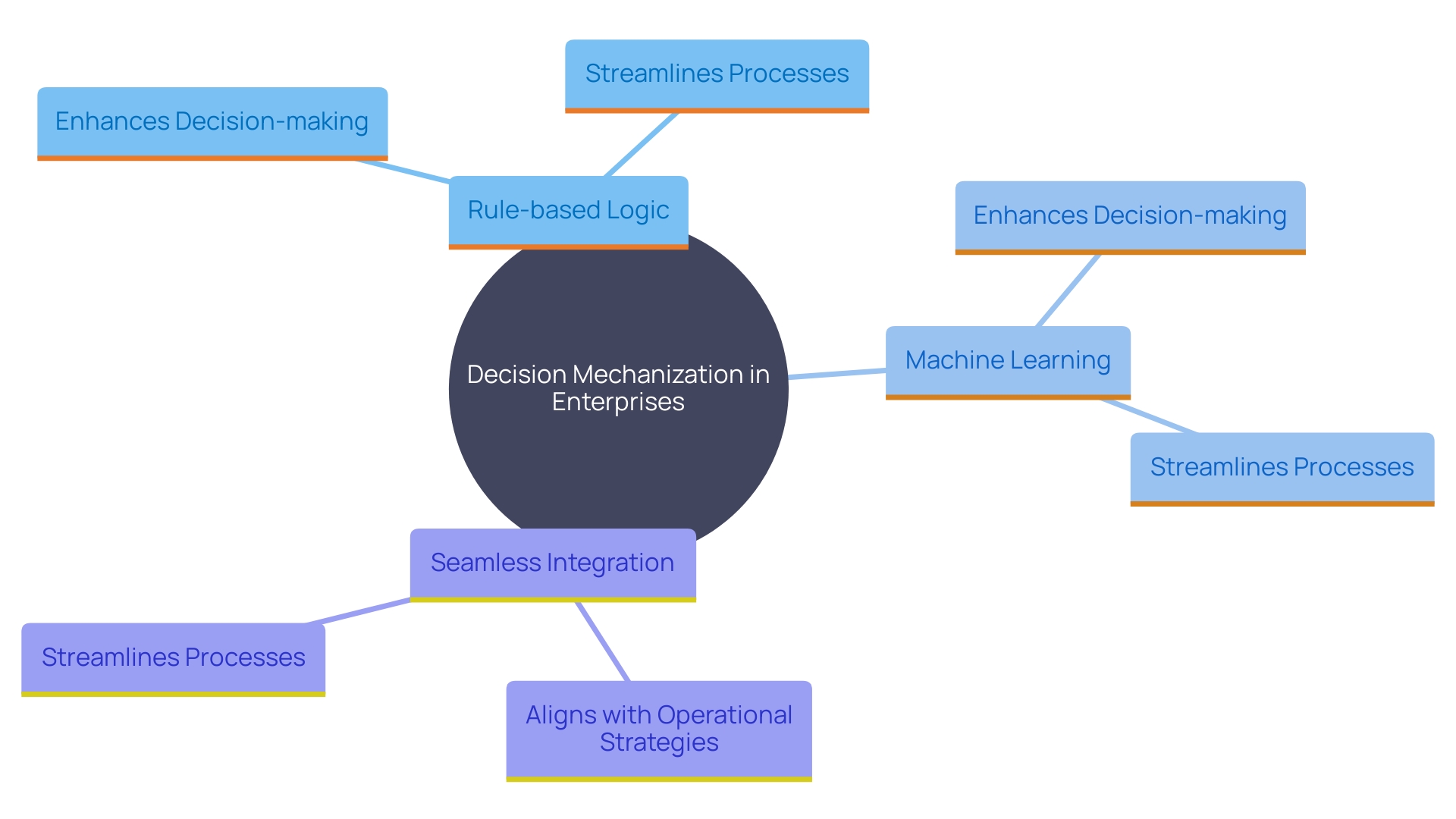
Benefits of Decision Automation
Applying automated choices can change an organization’s processes, providing numerous advantages. By utilizing AI and automated tools, companies can speed up their decision-making processes, significantly reducing the time needed to make critical choices. This rapid decision-making not only enhances efficiency but also ensures higher accuracy by utilizing data-driven insights, thereby reducing the potential for human error.
Furthermore, automation of choices promotes uniformity across all processes of making choices, guaranteeing that the same high standards are upheld throughout the organization. This consistency is vital for maintaining quality and reliability in business operations. Furthermore, with regular choices being automated, employees can shift their attention towards strategic, high-value tasks that foster innovation and growth, ultimately enhancing overall productivity.
A real-world example of this can be seen with Amgen, a biotechnology company that adopted Copilot for Microsoft 365 to enhance its operational efficiency. Initially beginning with 300 licenses, Amgen grew to 20,000, demonstrating the substantial influence of process optimization on their productivity and choices.
Furthermore, AI’s role in decision-making is indispensable. It aids in identifying and defining problems with greater precision by analyzing vast datasets to uncover hidden patterns and trends. This capability enables companies to make more strategic choices based on robust data insights, enhancing their competitive edge in the market. As noted, ‘Artificial intelligence, when coupled with Big Data, enables the extraction of valuable insights from massive datasets that would be practically impossible for humans to analyze manually.’
In conclusion, incorporating decision-making technology into organizational operations not only simplifies processes but also enables staff to participate in more significant and influential work, propelling the entity towards enhanced success.
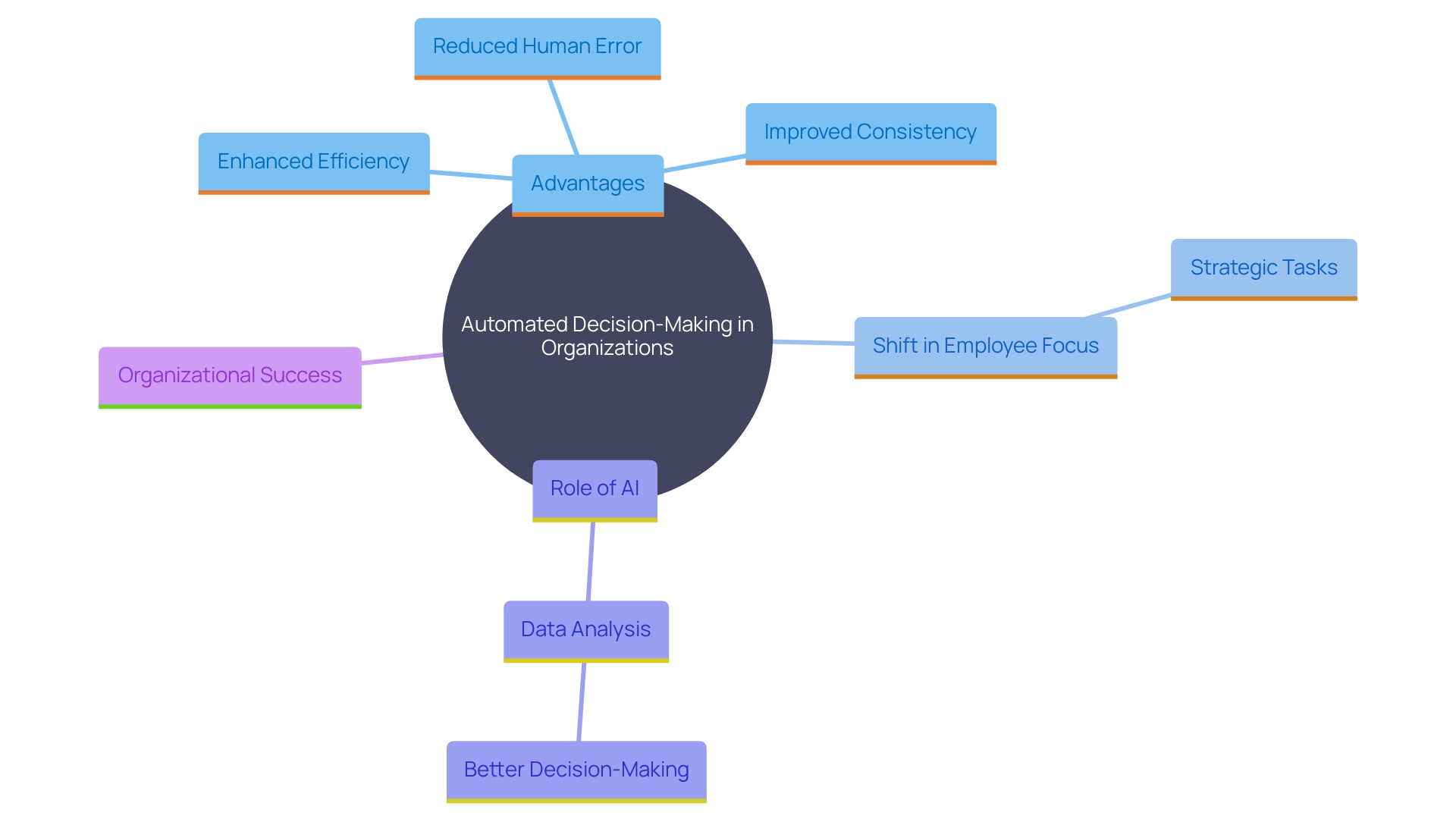
Impact on Business Efficiency
Decision automation significantly transforms business efficiency by streamlining the decision-making process and reducing manual intervention. This swift response to market changes enables companies to capitalize on opportunities and mitigate risks promptly, enhancing overall operational performance. AI plays a pivotal role in this transformation by accurately identifying problems through vast data analysis, revealing patterns and trends that might be overlooked by humans. For instance, AI systems can limit cognitive load on decision-makers, allowing them to focus on critical issues.
The integration of AI in decision-making processes fosters a data-driven culture within organizations, leading to continuous improvement. As pointed out by Konstantinos Mitsopoulos, a research scientist at the Institute for Human and Machine Cognition, generative AI systems can assist in overcoming human limitations such as mental exhaustion and restricted working memory. These systems can serve as decision ‘co-pilots,’ assessing dynamic situations, suggesting options, and completing tasks. This capability is crucial in uncertain times, as highlighted in a recent report where 94% of IT decision-makers are implementing technology changes to manage ongoing instability and uncertainty.
Additionally, AI-driven processes simplify intricate tasks, allowing companies to gain a deeper insight into market trends, consumer behavior, and operational efficiencies. ‘This strategic use of AI and information science in decision-making processes is essential for businesses aiming to thrive in today’s rapidly changing environment.’.
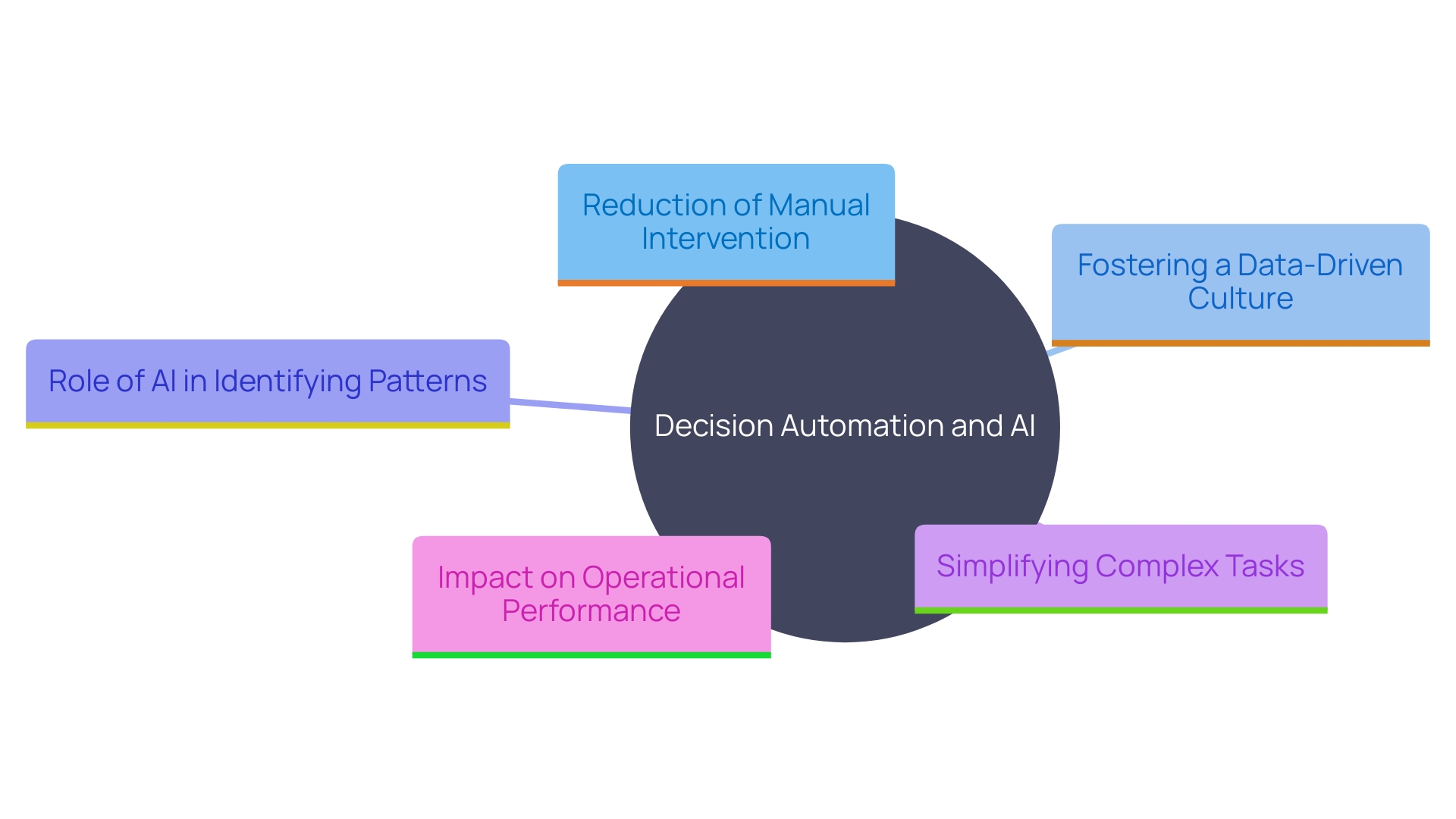
How Decision Automation Works
‘Decision automation utilizes a systematic process involving information gathering, analysis, and decision execution.’. At first, information is collected from various sources, including internal databases, customer interactions, and market trends. Advanced algorithms and machine learning models then analyze this information to generate valuable insights. The system subsequently applies predefined rules, transforming insights into actionable decisions that are seamlessly integrated into the business framework. ‘This iterative cycle resembles TBC Bank’s method, where ongoing information processing improves their time-to-market for digital products, ensuring exceptional banking experiences.’. Similarly, Bosch’s use of AI in green energy solutions exemplifies how sustained data analysis can lead to more efficient and sustainable energy production. As time passes, decision-making systems enhance their abilities, resulting in more precise and impactful choices, thus promoting operational efficiency and strategic achievement.
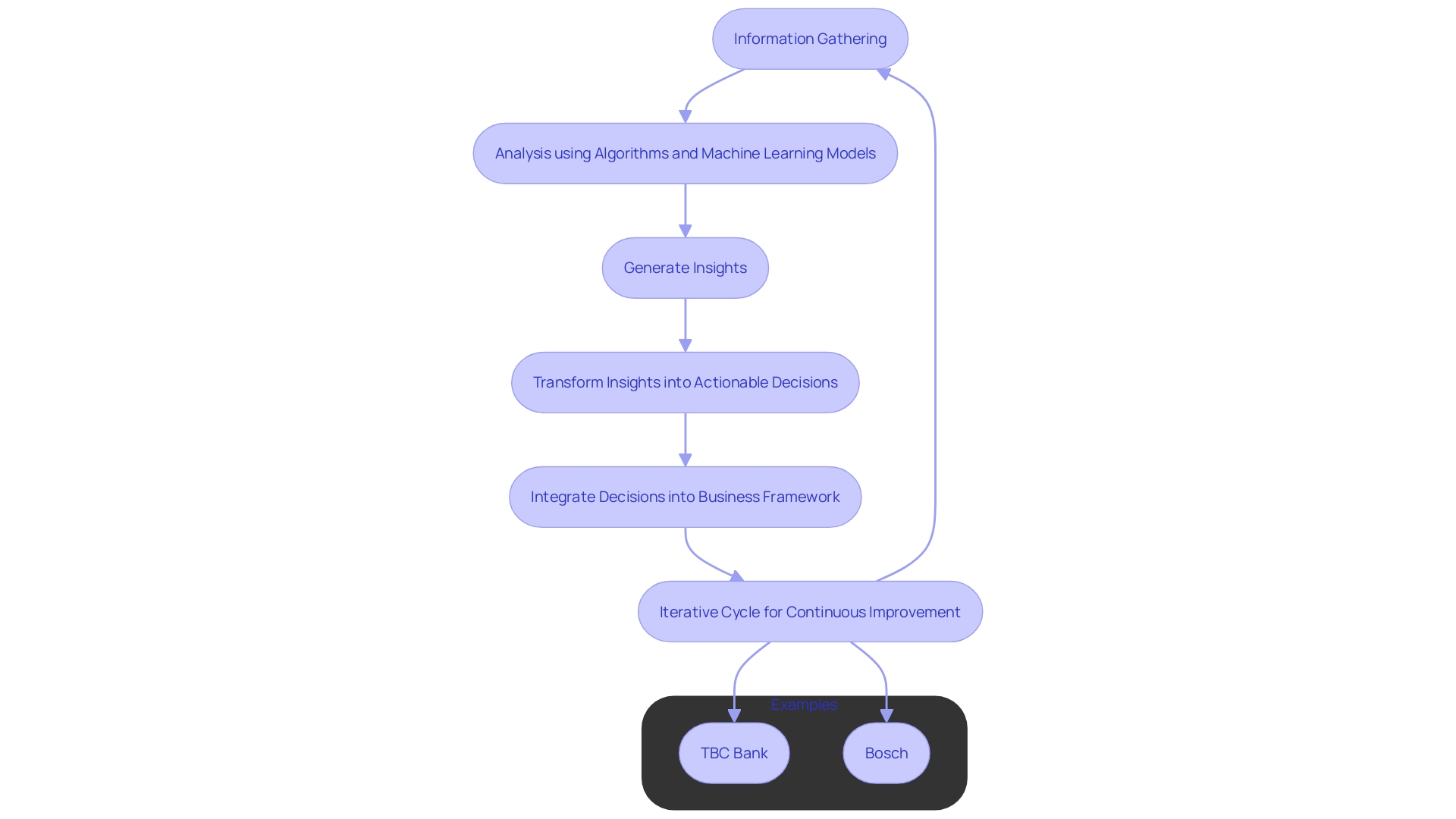
Applications of Decision Automation
Decision automation has become a transformative tool for organizations across diverse sectors. In finance, automated systems enhance risk assessment by analyzing vast datasets, thereby providing more precise insights and recommendations. Financial analysts, for instance, utilize AI to distill business insights from both financial and non-financial data, overcoming challenges posed by the volume and variety of information. This capability is essential for making informed investment decisions under time constraints.
In customer service, chatbots powered by AI handle numerous inquiries efficiently, improving response times and customer satisfaction. This automation not only streamlines operations but also frees up human agents to tackle more complex issues, thereby enhancing overall service quality.
Supply chain optimization is another critical application. AI-driven tools analyze supply chain data to predict demand, manage inventory, and optimize logistics. These systems help in reducing costs and increasing efficiency, ensuring that products are delivered on time and resources are utilized effectively.
Predictive maintenance in manufacturing is revolutionizing how companies manage their equipment. By using AI to predict when machinery is likely to fail, organizations can perform maintenance proactively, minimizing downtime and extending the life of their assets. This not only improves operational efficiency but also significantly reduces maintenance costs.
The integration of AI in these areas underscores its vital role in enhancing decision-making processes. As Professor Joshi observes, “To analyze AI choices, we cannot concentrate exclusively on outcomes being produced with AI.”. We need to comprehend the phenomenon alongside how we determine matters regarding AI and the consequences of such choices on other facets of the organization. This comprehensive approach guarantees that the integration of AI tools results in significant enhancements in operational efficiency and overall business growth.
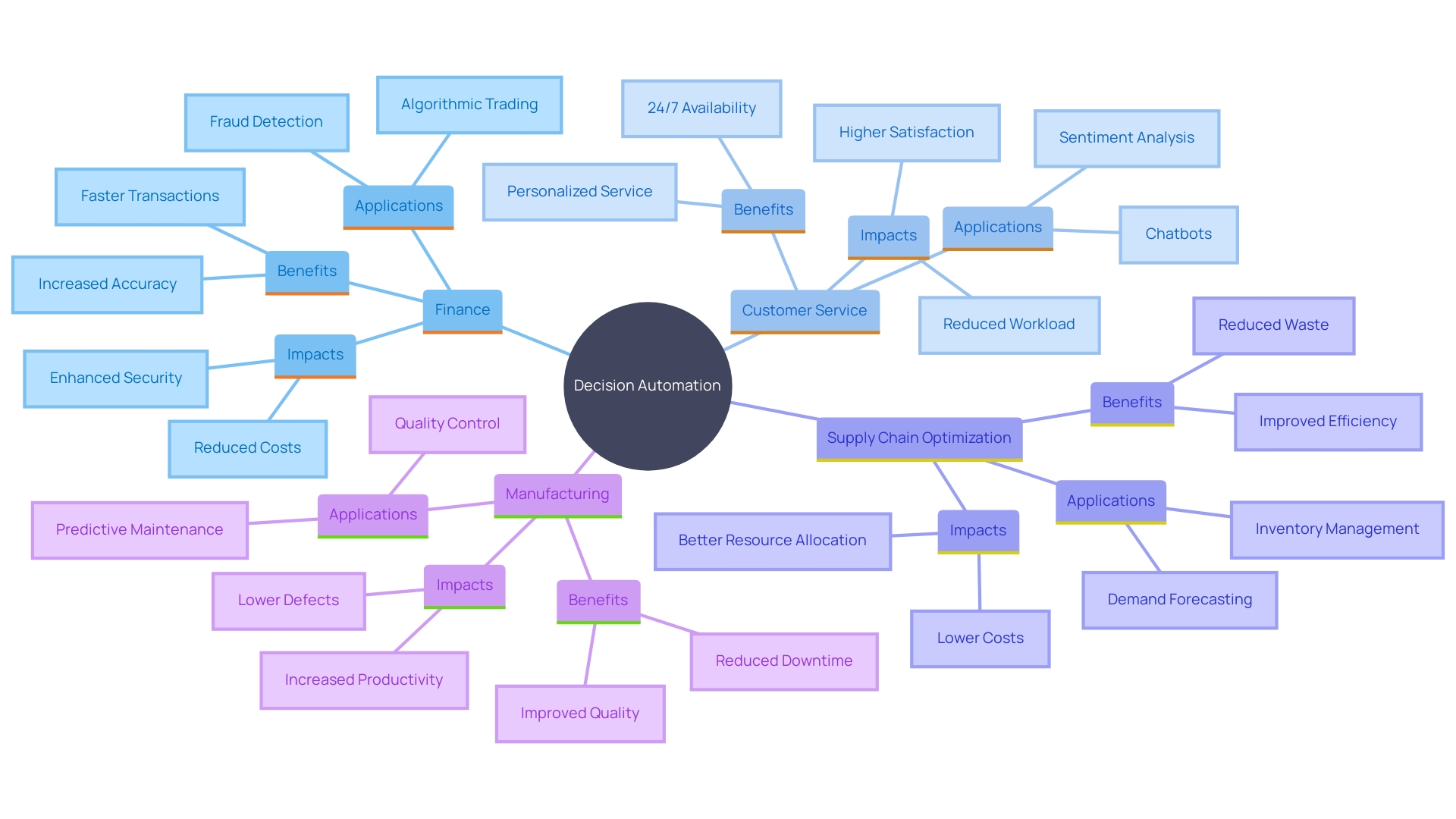
Data-Driven Decision Automation
Decision automation based on information quality and accessibility is crucial. ‘High information quality is paramount, as emphasized by industry experts like Jane Arnold of Aperio, who underscores the critical role it plays in operational efficiency and reliability.’. ‘The exponential growth of information, with 90% produced in the past two years and projections reaching over 180 zettabytes by 2025, necessitates vigilant monitoring to identify and correct inaccuracies.’.
Organizations must ensure datasets are fully understood before using them in predictive models. This includes understanding the information’s source, gathering methodology, and structure to ensure precise and pertinent predictions. For instance, in the industrial sector, information anomalies have led to significant operational issues, such as configuration errors and unnoticed environmental tags, highlighting the need for robust quality frameworks.
A structured method for managing quality involves profiling information to analyze content, structure, and relationships, thus identifying inconsistencies and outliers. Establishing clear standards for information formatting and representation is also essential. ‘With information preparation accounting for about 80% of analysts’ work according to Forbes, enhancing quality directly affects shortening the time to market for products.’.
‘AI in market research plays a crucial part in refining large amounts of information into practical insights, enabling companies to make knowledgeable choices based on well-organized details.’. This capability is crucial for maneuvering through the competitive environment, as it converts raw information into strategic benefits, ensuring choices are timely and pertinent by utilizing real-time insights and historical patterns.
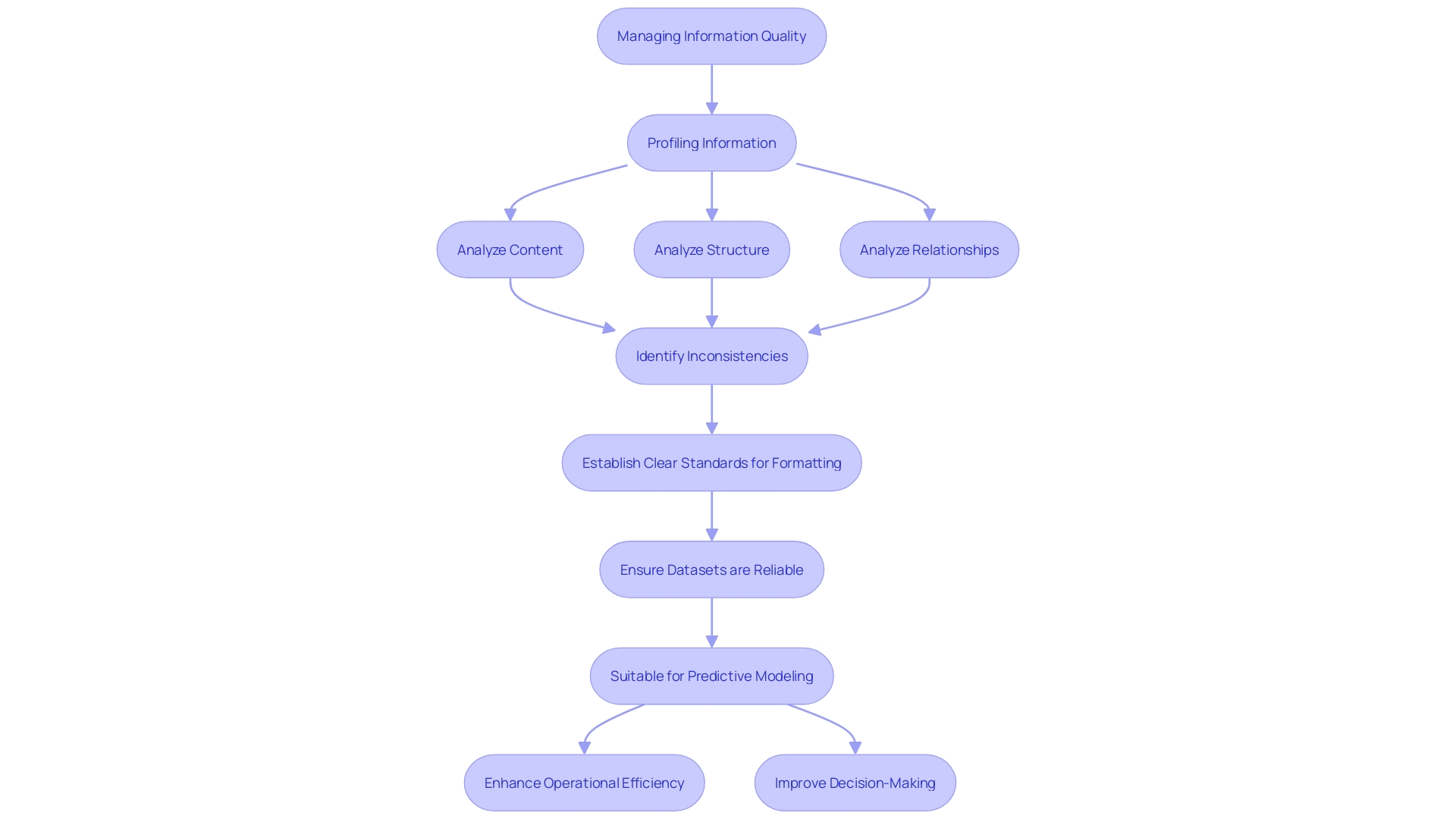
Challenges and Considerations
‘While automation of choices offers numerous benefits, it also presents several challenges that organizations must address.’. Ensuring data quality is paramount, as the adage “Garbage in, garbage out” remains true; high-quality data is essential for achieving measurable returns such as productivity improvement and cost reduction. Addressing potential biases in algorithms is another significant concern. A participatory approach, involving various stakeholders throughout the AI system’s lifecycle, can help mitigate biases by incorporating diverse perspectives and granular information, thereby improving the algorithm’s overall quality.
Managing resistance to change among employees is another hurdle. Engagement and transparency are key to building trust and gaining buy-in for AI systems. The ethical implications of automated decision-making cannot be overlooked; transparency and accountability must be integral to the process. As highlighted in discussions around autonomous weapons systems, the importance of maintaining human control over critical decisions is paramount. This principle is equally applicable to business processes, where ethical considerations must guide the deployment of AI and automation tools.
Furthermore, the international discourse on AI and ethics underscores the need for robust regulatory frameworks to ensure that AI technologies are used responsibly. Issues such as privacy, data protection, and the ethical use of AI in decision-making are central to this discussion, emphasizing the importance of placing human rights and ethics at the forefront of AI regulation.
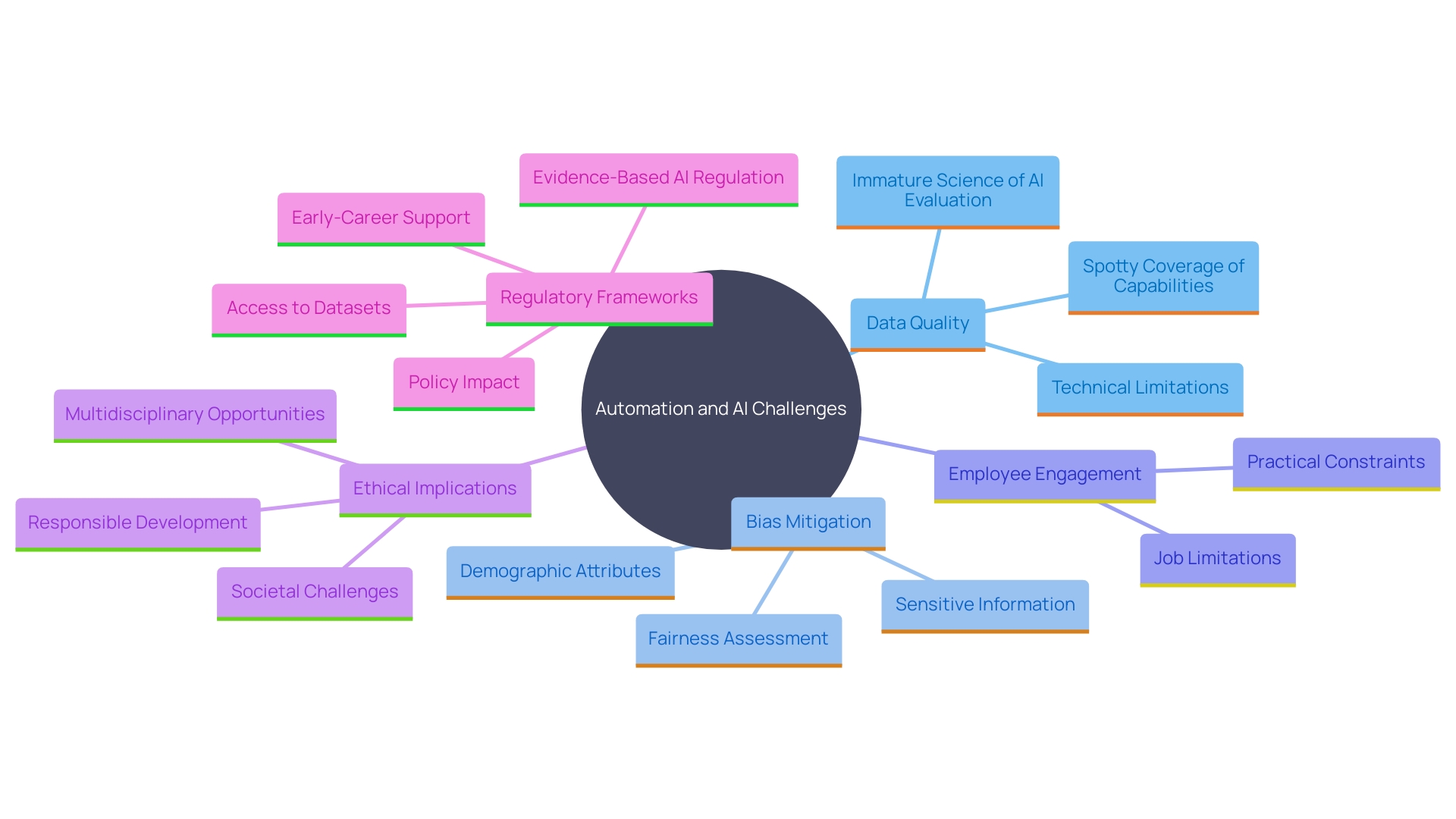
Conclusion
Decision automation stands as a transformative force in the business landscape, streamlining processes and enhancing decision-making capabilities across various sectors. By harnessing advanced algorithms and machine learning, organizations are equipped to make swift, data-driven choices that align with their strategic objectives. The integration of rule-based logic ensures consistency, while AI’s analytical prowess uncovers valuable insights from vast datasets, enabling companies to respond effectively to market dynamics.
The benefits of decision automation are profound, leading to increased efficiency, reduced human error, and the liberation of employees to focus on higher-value tasks. Real-world applications in finance, customer service, supply chain management, and predictive maintenance illustrate the versatility of this technology. Companies like Amgen and Renault exemplify how decision automation can drive operational excellence and foster a culture of continuous improvement.
However, challenges such as data quality, algorithmic bias, and employee resistance must be addressed to fully realize the potential of decision automation. A commitment to ethical practices and robust regulatory frameworks will ensure that the deployment of AI technologies is responsible and beneficial. By embracing decision automation and overcoming these challenges, organizations can position themselves for sustained success in an increasingly competitive environment.
